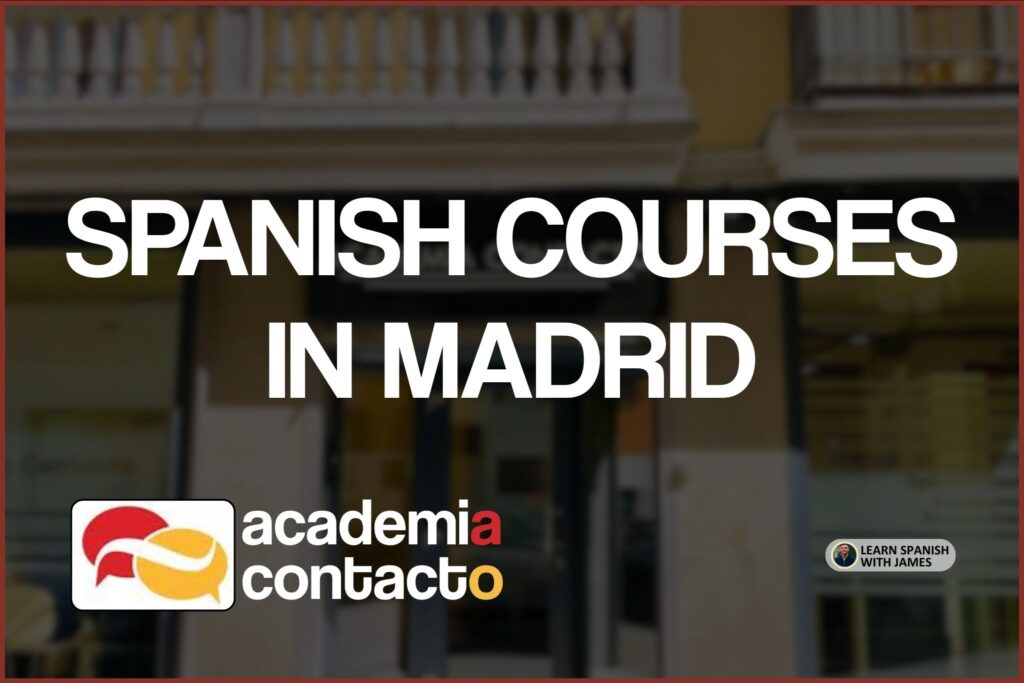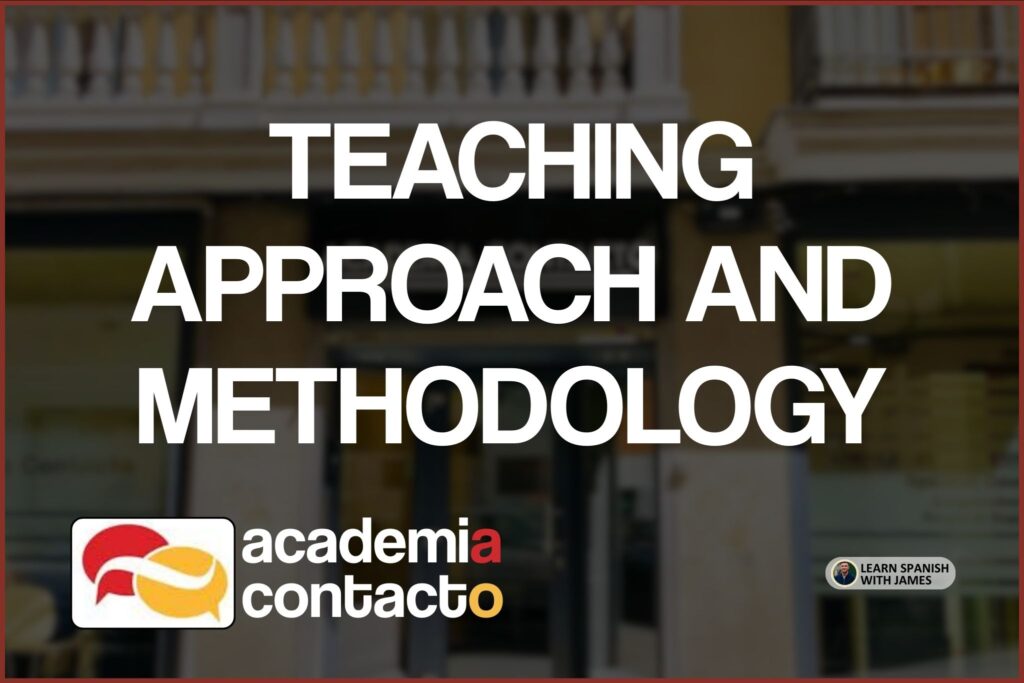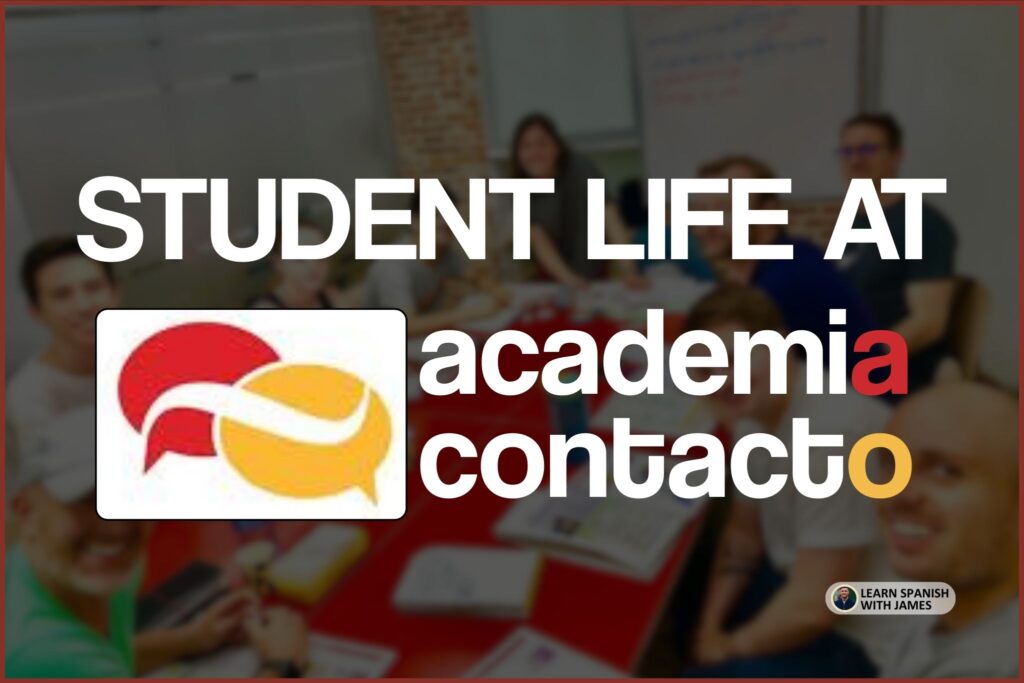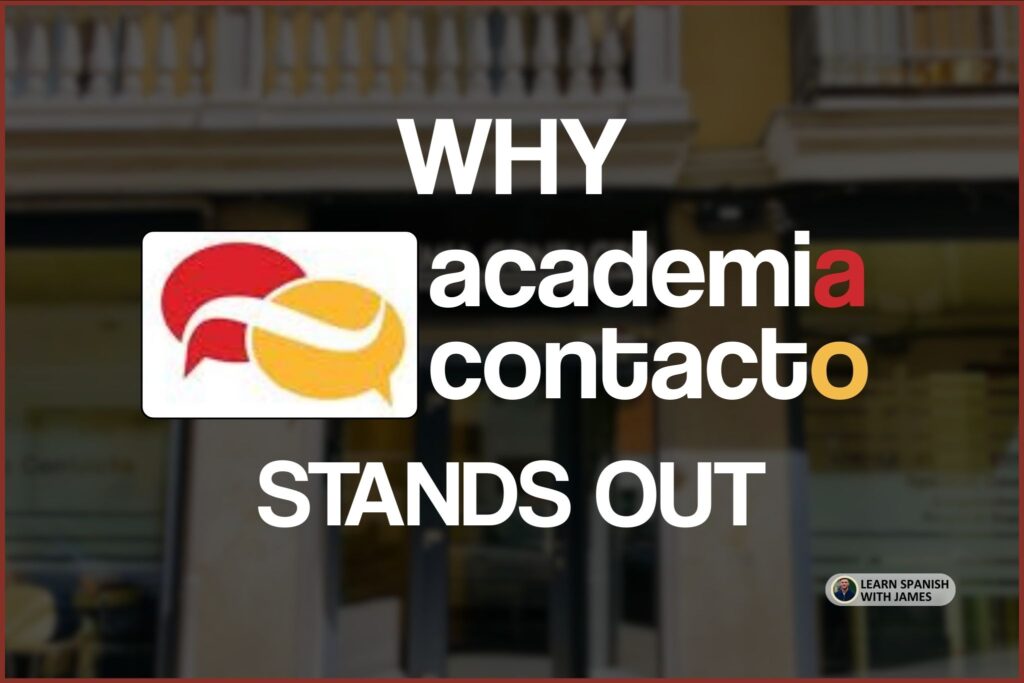Academia Contacto – A Leading Spanish School in Madrid

As someone who’s lived, studied, and taught Spanish in Madrid, I know how crucial it is to pick the right school when you are planning to study abroad.
If you’re searching for a Spanish school in Madrid that blends academic quality with a friendly, international atmosphere, then I believe Academia Contacto is a strong contender.
Not only have their teachers taught Spanish to foreigners for decades, but the school is accredited by Instituto Cervantes, an important seal of quality for international students.
I believe this leading Spanish school is worth considering if you are considering studying Spanish in Madrid.
About Academia Contacto

Academia Contacto opened in 2001 and focuses on Spanish for foreigners, delivered by native, university-educated teachers experienced in ELE (Español como Lengua Extranjera).
You should always look for qualifications of this type, or similar, when considering which Spanish school in Madrid you want to join.
Their stated aim is to get you learning Spanish confidently while immersing you in Spanish culture, something that resonates with my own teaching philosophy.
Furthermore, the school has partner centres in Barcelona, Valencia, Alicante, and Granada, so you can study in multiple cities or head to Catalonia, the Valencian region, or Andalusia if you want to leave Madrid.
Location in the heart of Madrid
The head office is in a central, well-connected area.
For learners, that means quick access to cafés, galleries, and everyday life in the capital, which I think is vital for using your Spanish beyond the classroom.
Why Choose Academia Contacto?
Accreditation by Instituto Cervantes signals that the school meets rigorous standards in teaching Spanish as a foreign language.
That’s the curriculum, teacher qualifications, and student services.
If you’re comparing options, remember that this is a credential worth prioritising.
Small class sizes for personalised learning
Another reason to consider Academia Contacto comes down to class size.
Group sizes are 3–10 students, which helps teachers adapt to your level and goals and gives you more speaking time.
If you’ve followed me for a while, you’ll know I’m a fan of smaller groups for faster progress and better confidence.
International student community
The school highlights a lively, international mix and supports learners with certificates upon completion. These are useful for your records, employers, or future study.
You’ll also find a level test to place you correctly and a price calculator to plan your stay. Madrid is not an expensive city compared with London, New York, or most U.S cities, but budgeting is still necessary and your school forms a big part of this.
Spanish Courses in Madrid

Standard Spanish courses
If you want a lighter weekly load while still progressing, the Standard 10 course offers 10 lessons per week (55 minutes per lesson).
Typical time slots include mornings and afternoons, which are handy if you’re balancing study with work.
I recommend working alongside your studies. While this may seem like overkill, working is a great way to practice your Spanish speaking, and to meet people, especially if you work in hospitality.
Intensive Spanish courses for fast results
For most learners aiming to learn Spanish in Madrid quickly, I recommend the Intensive 20 or higher.
With this option, you’ll study 20 lessons per week in the base version; Intensive 25 and Intensive 30 add conversation practice in very small groups (2–5 students for the conversation block).
These intensive Spanish courses are designed for pace and confidence. If you’ve followed me for a while, you’ll know how much emphasis I place on confidence when it comes to developing your Spanish, particularly from A2 to B1.
Combination courses (group + individual lessons)
At Academia Contacto, if you want targeted feedback, you can combine group classes with one-to-one time: Intensive 20 + 5 or Intensive 20 + 10 add 5 or 10 individual lessons per week to the group course, ideal for pronunciation work, professional Spanish, or catching up on grammar gaps.
University pathway and exam preparation programs
Many international students that study Spanish in Madrid plan to study at a Spanish university.
The University Pathway tracks blend intensive Spanish with EBAU/PCE exam preparation, in collaboration with a specialist academy. There are Express (~8 months) and 1-Year (~12 months) formats, depending on your timeline.
If you want to learn more about the collaboration model and pathway options across different Spanish locations, I recommend checking out the Barcelona page.
If certification is your immediate goal, the school also prepares for DELE, which is the widely recognised diploma issued by Instituto Cervantes.
Flexible online Spanish classes
I remember learning intensive German online during COVID lockdown. And as much as I love in-person learning and teaching, learning Spanish online is just easier for some people.
If you can’t travel yet, then I recommend you check out the Online page which shows individual lessons, A1–C2 levels, and flexible durations “as many weeks as you wish” with 60-minute lessons.
It’s a sensible option to start now, before you get to Madrid, and continue on-site later.
Teaching Approach and Methodology

Next, I want to focus a little on teaching approach and methodology, both of which play a key part in your progress when learning Spanish in Madrid.
Communicative and immersive learning style
Classes are practical and communicative from day one, with lots of speaking and listening, and Spanish grammar taught in context.
If you’ve read my Spanish grammar guides or follow Learn Spanish With James on TikTok, you’ll know I push for real-life Spanish from the start. I think this learning style at Academia Contacto aligns well.
Qualified native teachers
Teachers are native speakers with relevant university qualifications and ELE experience. Again, I believe this is a key factor in consistent classroom quality.
Practical Spanish for everyday use
The schedule and course design favour usable Spanish: navigating the city, ordering food, and making plans. And think about it, these are exactly the situations you’ll encounter in Madrid.
For reference, the school outlines progression estimates: on an intensive schedule, think ~5–6 weeks for A1, ~6 weeks for A2, ~6 weeks for B1, ~12 weeks each for B2 and C1 (attendance and study habits matter, of course).
Student Life at Academia Contacto

One of the most special aspects of studying Spanish in Madrid is the social aspect. There are students from all over the world here.
Where you stay and who you choose to hang out with plays a huge role in how quickly you are able to learn Spanish and progress from beginner, to intermediate, and so on.
Accommodation options in Madrid
You can book Madrid accommodation directly through Academia Contacto. This provides a range of options, such as shared flats, or with a Spanish family.
As per the school website, shared apartments are furnished, centrally located, and include internet, bedding, and utilities. Kitchens and common areas are shared.
Homestays suit learners who want extra immersion in Spanish. I learnt Spanish in Costa Rica with a host family. It was an amazing way to immerse myself in the culture and force myself to speak Spanish on a daily basis.
If you are planning to study Spanish in Madrid then I recommend staying with a host family to complement this.
Cultural activities and excursions
Students at Academia Contacto can expect an activities programme alongside classes; these include “exciting cultural activities” as per the school’s website.
From my experience, this is where your Spanish really comes alive, when you’re out in the city, chatting, ordering, and exploring the city.
Building friendships and language exchange
The school emphasises community: small groups, international classmates, and an environment where you’ll meet people and have fun while you learn. I think this is important as this keeps motivation high.
Why Academia Contacto Stands Out

Academia Contacto has over two decades of experience teaching Spanish to foreigners, which is more than most schools.
And, since 2001, the school has refined its programs, built a strong teaching team, and welcomed students from all over the world.
The Madrid centre has 8 modern classrooms, designed for small groups of 3–10 students, ensuring personal attention for students.
In addition to this, Instituto Cervantes accreditation and partner schools in other Spanish cities make Academia Contacto a reliable choice among Spanish language schools in Madrid.
Central location near Madrid’s attractions
Also, I should also mention location. Madrid is a fantastic city with so much on offer.
Being based in Raimundo Lulio 7 puts you within easy reach of neighbourhood cafés, parks, and museums.
Support for international students
From airport pick-up and accommodation to general assistance, the school’s service pages show a practical, responsive setup (including a 24-hour emergency number once you’re on site).
Certificates upon completion are also standard.
How to Enrol at Academia Contacto
Step-by-step registration process

Head to the Apply page to choose your city and course, pay a deposit, or arrange a bank transfer.
You’ll also find a price calculator elsewhere on the site to estimate your total.
Visa and travel support
If you’re from outside the EU, the school can issue documentation for visa purposes tied to your enrolment. My suggestion is always to check the latest consulate requirements, but the school is used to helping with the paperwork.
Final Thoughts
If your goal is to learn Spanish in Madrid with the support of small groups and the reassurance that comes with Instituto Cervantes accreditation, I can honestly say Academia Contacto is a great option.
I like that they offer a full range of choices: Standard, Intensive, and combination courses, plus online lessons and university pathway programs, so you can shape your study plan around your own needs.
Furthermore, their central location makes everyday life in Madrid part of the learning experience, and with accommodation organised through the school, it’s easy to settle in quickly.
What really stands out to me is the community feel: you’ll keep practising your Spanish not only in class but in daily life with fellow students.

About James – Or Should that be Santiago?
My name is James. I am a Brit with a love for the Spanish language. I have lived in Spain, Argentina, and Costa Rica, and I have been teaching Spanish for over a decade. This site will show you how to master the elements of Spanish grammar that often dishearten learners. I hope you enjoy the site and find it useful.
If you are interested in taking your Spanish to the next level, check out the Courses section for a full list of the Spanish courses I suggest. All reviews are based on my personal opinions.
